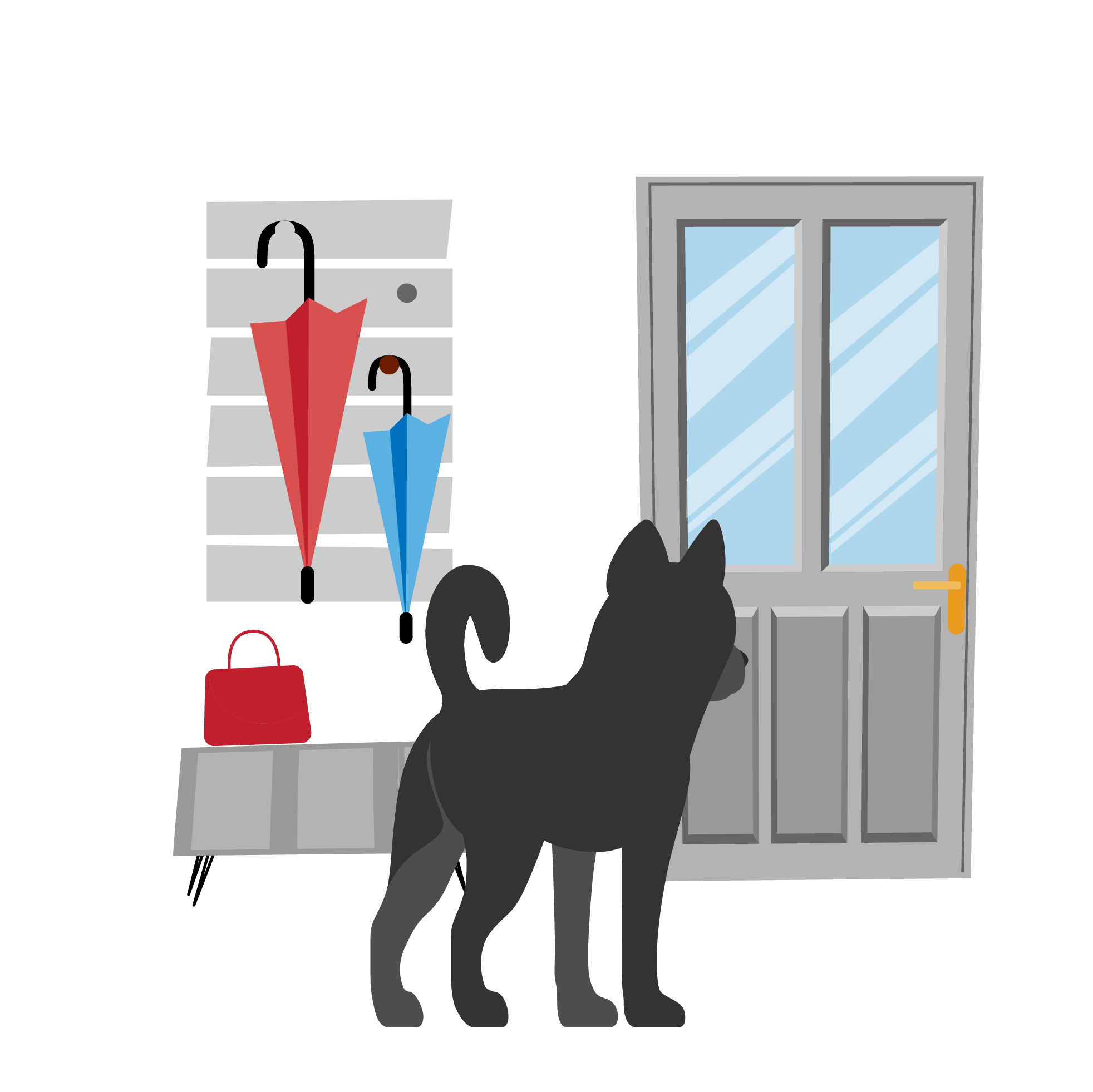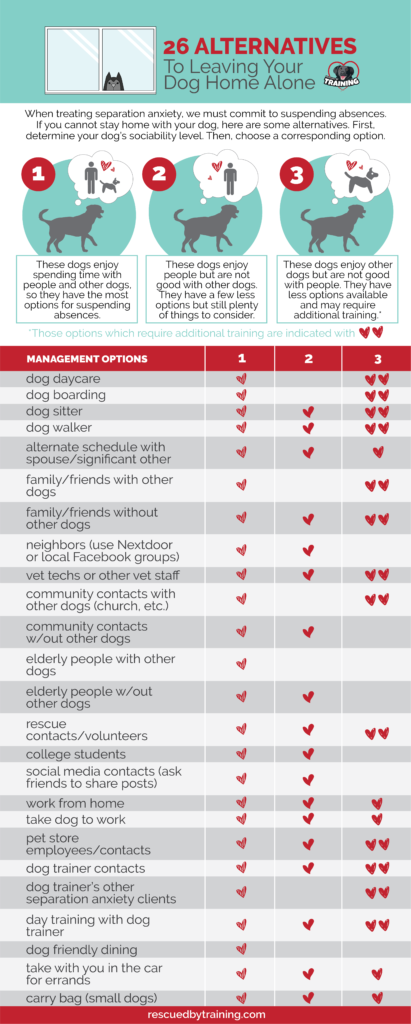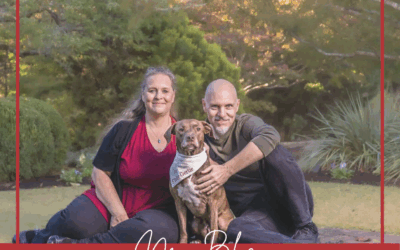SUSPEND ABSENCES. Now, hear me out. I know your gut reaction is that impossible – maybe a little less so during Covid but under normal circumstances you have errands to run, work meetings, social engagements, vacations, date night, going to the gym and more. But here’s the thing – suspending absences is a win-win. When we suspend absences for separation anxiety, the dog stops having a panic attack, stops rehearsing that anxiety behavior, stops vocalizing, stops the destruction, stops annoying the neighbors, stops eliminating in the house and you stop feeling guilty about leaving, angry about the destruction and sad about overall situation. Everyone wins.
And, clients all over the world are doing it. Even clients with dogs who have dog-reactive dogs or dogs who are selective with people. Sure, those dogs may be a little tricker to find management solutions for, but it’s all doable. And it’s necessary to the training process. We can’t expect to make progress with teaching the dog to feel safe during absences if sometimes absences aren’t safe, because they’re longer than the dog can safely handle. So suspending absences is the most important part of the training process. If you do nothing else, do this. Even if you decide not to formally do training, you must commit to suspending absences to help your dog.
Just like with any phobia, dog or human, no behavior consultant would advise flooding the client with exposure to “cure” the patient. If a client comes to me with a dog who is afraid of children, my first recommendation is to prevent the dog from having access to children except in controlled, carefully managed training situations. Similarly, if you went to a therapist for fear of spiders, they wouldn’t just dump a bunch of live spiders on you to help you “get over” your fear of spiders. And if you have a separation anxiety dog and leave them alone for longer than they can handle, that’s the equivalent of dumping live spiders on a person who is afraid of spiders, even if it’s only for a short period of time or only once a week or only for whatever period of time you rationalize. Not only does that not help them feel safe, it makes their fear worse.
This week I’m releasing a downloadable, printable checklist of 26 ideas to help you find ways to suspend absences, based on the sociability level of your dog. DOWNLOAD IT HERE. The list is broken into 3 sections: dogs that are friendly with dogs and people, dogs that are friendly with dogs but not strangers and dogs that are friendly with strangers but not other dogs. Separation anxiety is treatable and I hope this valuable resource helps you find ways to suspend absences more easily and get your dog on the right track. If you need help, set up your initial assessment today! Separation anxiety training is done 100% remotely so you can be anywhere and I can help you!
Also, be sure to check out my self-paced Separation Anxiety Foundations course.
Happy training!
![]()





